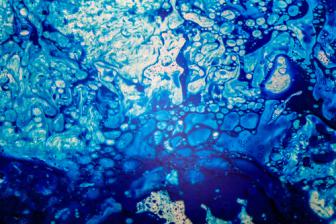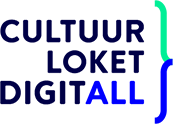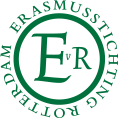Article
Jonas van de Poel on the inner life of a colour
Poetry up close: ‘Hakozaki on deep blue’

April 30, 2015
Koike offers no resolution as to whether or not Hakozaki recovers from his transcendental experience. The poem’s sequel does, however, resolve itself. Very gently, Koike shifts to a first person perspective that expands the poem’s subject matter, transposing the colour blue from an external phenomenon into a more internalized one. The colour blue is framed as the death drive, as a mark of ethnicity, as the wish to travel, as part of the enforced pink-blue gender division – ‘I hate the notion of dividing things up like that’ – and, finally, as ‘a truly noble colour’ that offered ‘the first whiff of freedom’.
Because, Koike writes, ‘Aren’t I Hakozaki? Isn’t Hakozaki me? We love blue’, just like we love the sharp grief that accompanies realizations of life’s transitory quality. This sharp grief runs deep, but does not prevent us from experiencing an overwhelming sensation of love, when enraptured by something as tender as a small blue convolvulus, a faint touch of blue in the white of a boy’s eye, or a breathtaking poem written by Masayo Koike. Read Koike's HAKOZAKI ON DEEP BLUE in our archive, alongside this selection of poems that view the same colour in its many shades and forms:
RECIPE FOR MAKING THE COLOUR BLUE, Nuno Júdice (Portugal)
AFTER KANDINSKY: BLUE PAINTING (1924), Katherine Gallagher (Australia)
FATHER’S BLUE & WHITE PORCELAIN, Yang Lian (China)
LEMON BLUE, Chris McCabe (United Kingdom)
LITTLE GIRL BLUE, Anna Herman (Israel)
THEY TELL ME YOUR COLOUR IS BLUE, Dilip Chitre (India)
MY BLUE RESIGNATION CONCLUDE, Phillip Zhuwao (Zimbabwe)
THE BLUENESS OF EVENING, Hassan Najmi (Morocco)
EPILOGUE, Olivier Cadiot (France)
Jonas van de Poel is the current web/editorial intern of Poetry International. In addition to studying at the University of Amsterdam, he is a poet and co-founder of the Amsterdam Writers Guild.
According to her translator, Leith Morton, Masayo Koike (Tokyo, 1959) is ‘a poet who treasures words’, her verse being ‘quiet rather than angry’. These statements neatly tie in with Koike’s poem ‘Hakozaki on deep blue’, blue being the colour most commonly associated with concepts such as peace, order, harmony, sincerity and tranquillity. Although quiet and reserved, the poem is heavily laden with sentimentality, a depiction of the romantic notion of the spontaneous overflow of powerful feelings that would have made Wordsworth smile in delight.
Waiting in front of the station for his friend, the eye of the poem’s hero, Hakozaki Ichirô, is drawn to a mass of small blue flowers, its deep blue colour reducing him to the state of a helpless, newborn baby. This stifling, paralyzing moment is not to be mistaken with a momentary loss of feeling, rather it is a momentary and momentous feeling of loss: the epiphanic and sad realization that the fleeting bliss of the womb is now nothing more than an unattainable sliver of memory. It is the flower’s deep blue that pierces ‘Hakozaki’s mucus membranes / Like an overflowing river of it’. It causes a ‘Movement of emotion, an impulse’, which might stifle and distress Hakozaki physically – ‘in his chest’, and his ‘somewhat contorted face’ – but which impels both his and the reader’s emotional state to soaring heights.Koike offers no resolution as to whether or not Hakozaki recovers from his transcendental experience. The poem’s sequel does, however, resolve itself. Very gently, Koike shifts to a first person perspective that expands the poem’s subject matter, transposing the colour blue from an external phenomenon into a more internalized one. The colour blue is framed as the death drive, as a mark of ethnicity, as the wish to travel, as part of the enforced pink-blue gender division – ‘I hate the notion of dividing things up like that’ – and, finally, as ‘a truly noble colour’ that offered ‘the first whiff of freedom’.
Because, Koike writes, ‘Aren’t I Hakozaki? Isn’t Hakozaki me? We love blue’, just like we love the sharp grief that accompanies realizations of life’s transitory quality. This sharp grief runs deep, but does not prevent us from experiencing an overwhelming sensation of love, when enraptured by something as tender as a small blue convolvulus, a faint touch of blue in the white of a boy’s eye, or a breathtaking poem written by Masayo Koike. Read Koike's HAKOZAKI ON DEEP BLUE in our archive, alongside this selection of poems that view the same colour in its many shades and forms:
RECIPE FOR MAKING THE COLOUR BLUE, Nuno Júdice (Portugal)
AFTER KANDINSKY: BLUE PAINTING (1924), Katherine Gallagher (Australia)
FATHER’S BLUE & WHITE PORCELAIN, Yang Lian (China)
LEMON BLUE, Chris McCabe (United Kingdom)
LITTLE GIRL BLUE, Anna Herman (Israel)
THEY TELL ME YOUR COLOUR IS BLUE, Dilip Chitre (India)
MY BLUE RESIGNATION CONCLUDE, Phillip Zhuwao (Zimbabwe)
THE BLUENESS OF EVENING, Hassan Najmi (Morocco)
EPILOGUE, Olivier Cadiot (France)
Jonas van de Poel is the current web/editorial intern of Poetry International. In addition to studying at the University of Amsterdam, he is a poet and co-founder of the Amsterdam Writers Guild.
© Jonas van de Poel
Sponsors
























